PRESTO PLANS
Sent straight to your inbox
CLICK HERE TO ACCESS
Sign up to receive 10 ready-to-use ELA resources your students will love!
10 FREE ELA RESOURCES
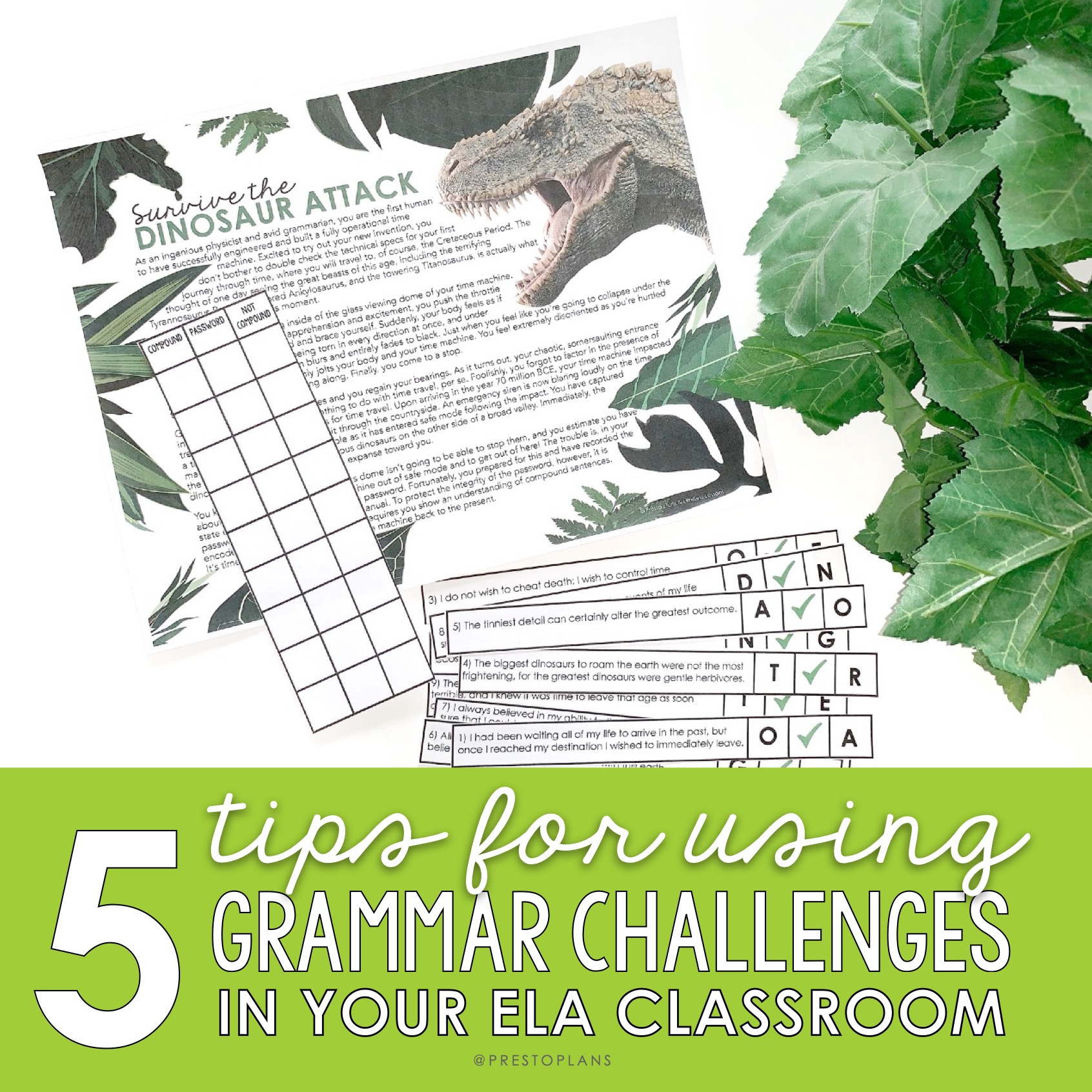
5 Tips for Using Grammar Challenges in Your ELA Classroom
It can be difficult to get students excited about grammar, and understandably so. I used to feel a bit apprehensive myself about the topic. I felt like the way I was teaching grammar to my students was a bit old-fashioned and relatively unexciting compared to some of the other units I taught. It was only when I started gamifying grammar in the classroom that it became more interesting—for me, and for the students. Once I started using grammar challenges in the classroom, my experience with teaching grammar changed completely. Here are 5 tips for using grammar challenges so that you can use them in your own ELA classroom.
What’s a Grammar Challenge?
A grammar challenge has students use their grammar skills to solve a puzzle or an escape-room style task. Grammar challenges serve to develop student grammar skills while also activating their critical thinking and problem-solving skills.
Here’s how they work:
- Teachers assign students a grammar quiz to check student understanding on a particular grammar topic, such as capitalization for example.
- Then, they use a presentation that teaches the grammar rules.
- The class reads a narrative to get hooked into the backstory of the grammar challenge.
- Students then begin the actual escape-room style challenge, working to solve it by using what they’ve learned from the lesson.
Ideally, an individual grammar challenge will cover a single grammar topic, so you might do one on capitalization rules one day, then perhaps one on how to use commas in a series on another day. If you want to try it out, you can grab the comma series grammar challenge for FREE by clicking here.
Now, onto the five tips for implementing grammar challenges in the ELA classroom…
1. Determine an Area of Focus and Meet Students at Their Level
It’s important, before diving into a grammar challenge with your students, to determine where to focus your efforts. I personally think it’s a good idea to start off by first assessing where your students stand with regard to common grammar rules and then determining what to prioritize accordingly. There are two ways that you can go about doing this: by examining student writing or by providing a formal pre-assessment for them to complete.
Examine Student Writing
A sure way to find out what your students know and don’t know about grammar is by reading their writing. I actually prefer this method over the following one. Seeing your students’ grammar mistakes in the context of their writing will give you a more authentic understanding of their abilities. But the following approach has its advantages too. You might find it beneficial to use both methods.
Provide a Pre-Assessment
By assigning a pre-assessment grammar quiz to your students, you can examine their understanding of a particular grammar topic. You might give a short quiz through which they can show their understanding distinctions between Their, They’re, and There, for example. From this quiz, you’ll be able to immediately determine their skill levels in this topic area and then tailor your lesson plan accordingly.
This is a practical approach. However, one drawback is that students might be able to guess the correct answers on such a quiz. Also, just because students can identify grammatical errors in a multiple-choice setting, doesn’t mean they are applying these correct grammar rules to their own writing. And that is, after all, the ultimate goal here.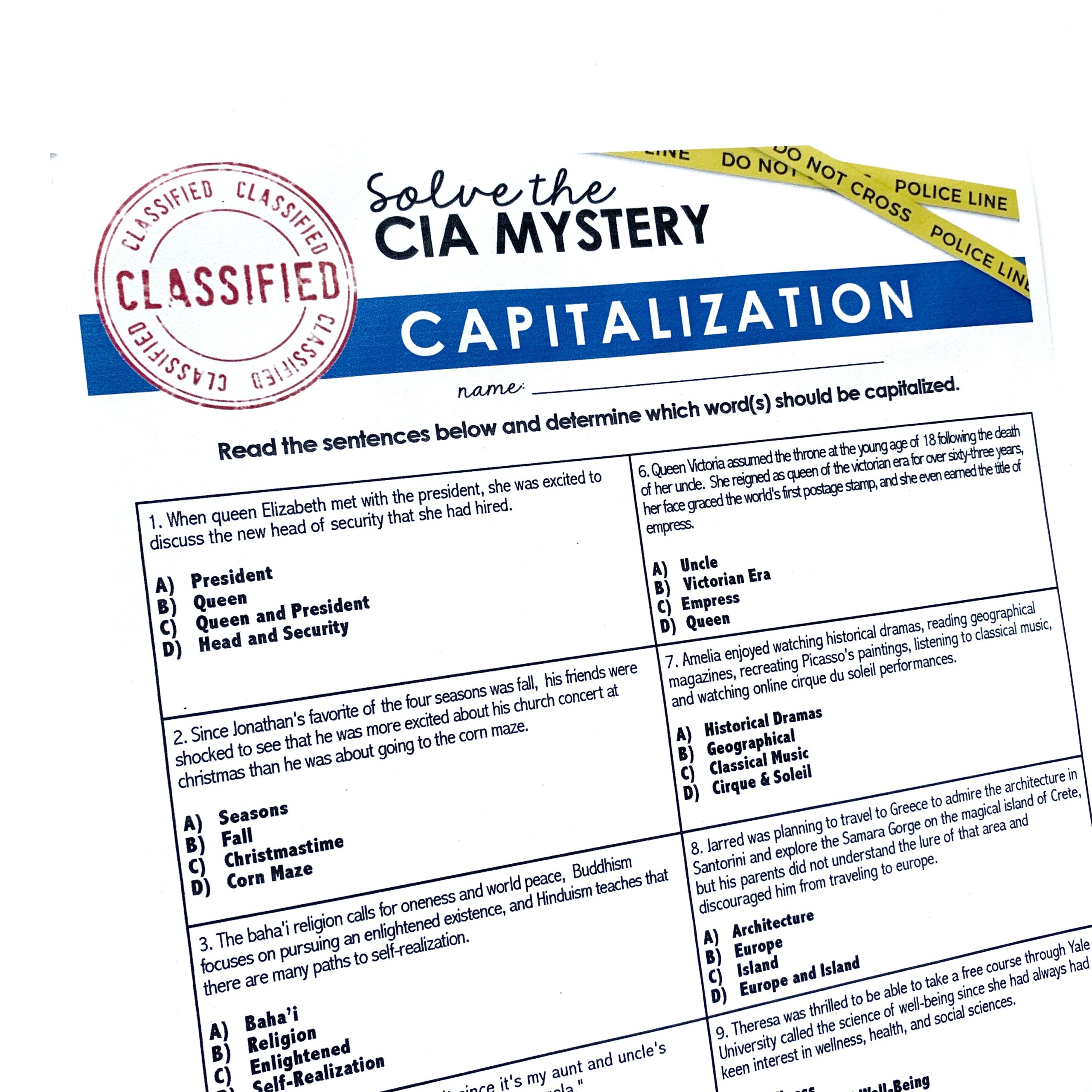
2. Build Anticipation and Excitement
It’s important to provide direct, clear explanations of the grammar rules to your students, but it’s equally important to get students engaged enough to really absorb this information. I like to use a grammar challenge presentation as the foundation for the lesson. This is where I break down the grammar rules, and it’s also where I house some of the fun elements of the activity that will serve to build some hype around the material. In the presentation, I include a backstory to really set the scene, a narrative to accompany an interactive challenge. Similarly, I even sometimes bring in costumes and decorations specific to the theme of that particular lesson. I encourage you to do the same. Go all out with these!
3. Provide a Hands-On Competitive Challenge
With the grammar challenge, we want to build a fun environment to hopefully get students to look at grammar rules from a different perspective, using different parts of their brains. If you present it as a hands-on and competitive activity, you’ll engage a much broader range of students than if you simply teach grammar the old-fashioned way.
Divide your students into teams and encourage them to work with their hands. Your kinesthetic learners will thank you! You can use an escape-room style challenge that gets students up and moving and competing to crack a code from correct grammatical answers! I certainly wasn’t taught the grammar rules this way, but if I was, I sure would have been more engaged…
4. Conversation over Clues
When gamifying grammar like this, it can be tempting to help struggling students get to the right answer, but it’s important that you refrain from giving away clues unless absolutely necessary. The grammar challenge thrives in its balance between having fun and learning. Of course, as the grammar challenge proves, the two aren’t mutually exclusive. But it’s important that the activity is not only fun for your students, but also challenging. Remember this: we ideally want students to spend some time struggling to find solutions to these challenges. That’s because, as you know, it’s in these moments of struggle that the real learning happens!
With that said, you shouldn’t be totally silent while your students are completing grammar challenges. Circulate the classroom and get involved in conversations with your students. Listen to their thought process and use this insight to detect gaps in their understanding of key concepts. This will help you (and them) down the road. Just don’t give anything away unless everyone is totally lost…
5. Celebrate with Team Photos
My last suggestion is to conclude your grammar escape-room challenges with teams photos. Costumes or not, students will be thrilled to pose with their group. This is a great way to commemorate the experience for them—and for you. You might even consider making some funny signs that indicate that they did or did not escape or solve the challenge like you often see at escape rooms.
Learn all about the grammar challenges that I use by clicking here. If you’re ready to stock up on a whole bundle of grammar challenges, click here.
I hope you found these tips for using grammar challenges in ELA helpful, and please let me know if you have any questions!
Search the blog for what you are teaching
GIVEAWAYS
sent straight to your inbox!
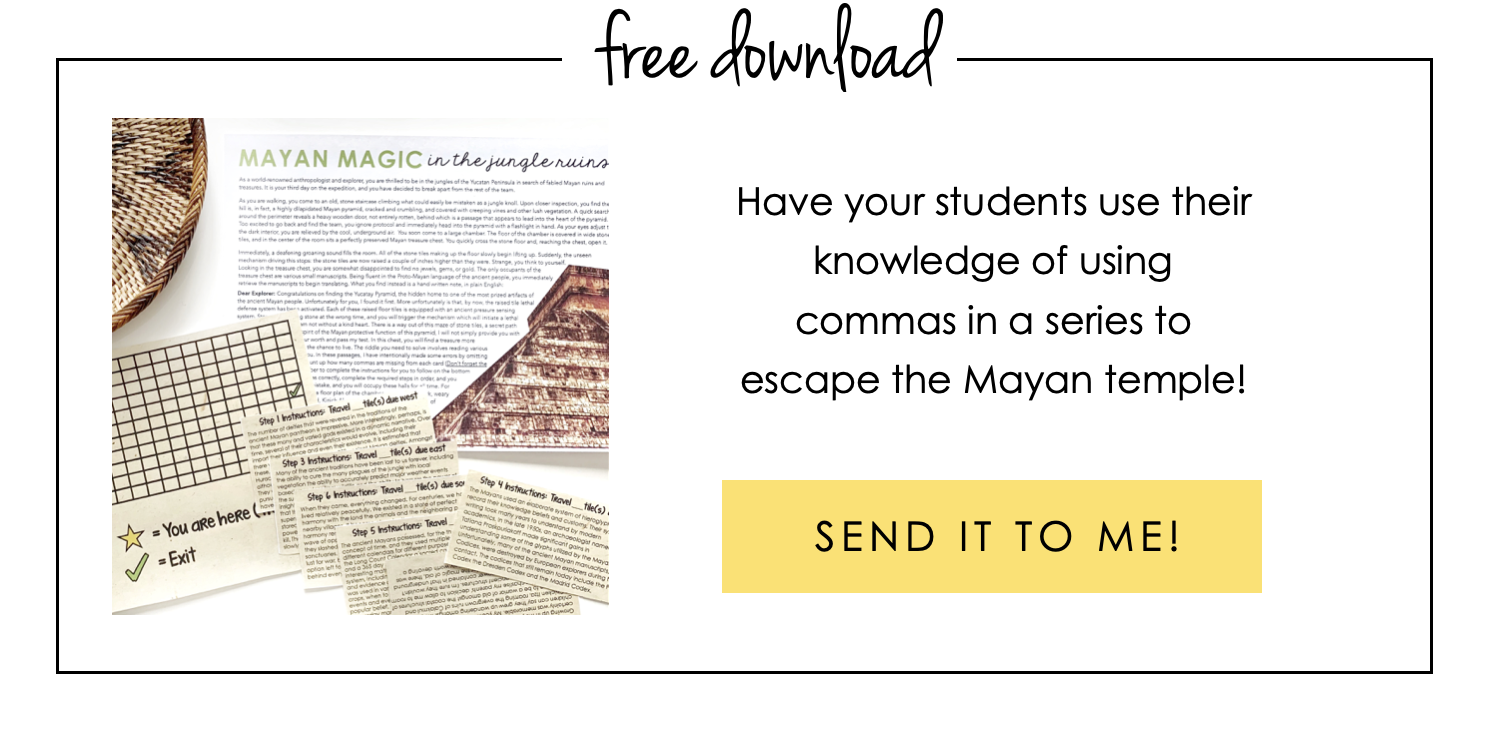
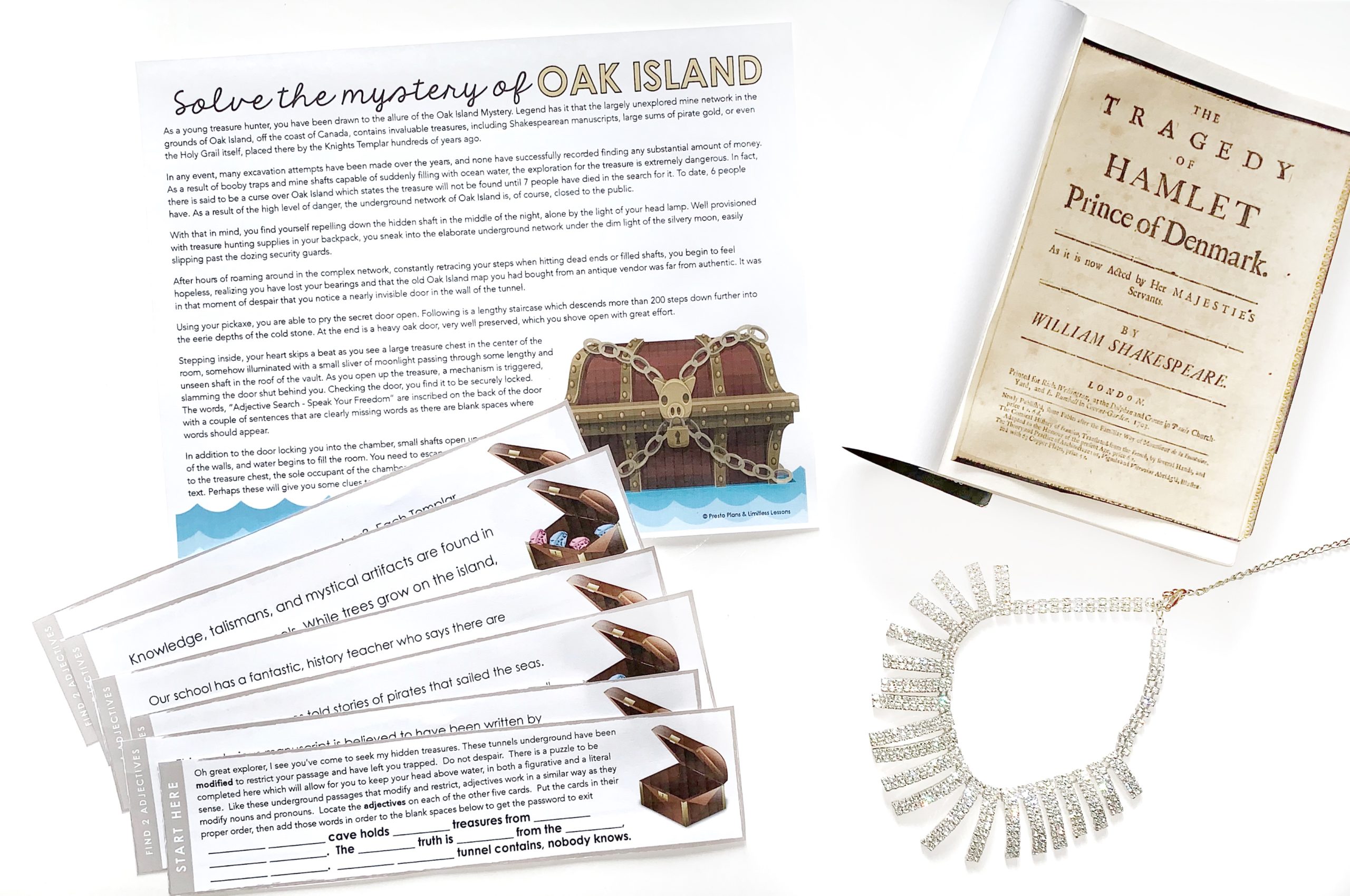
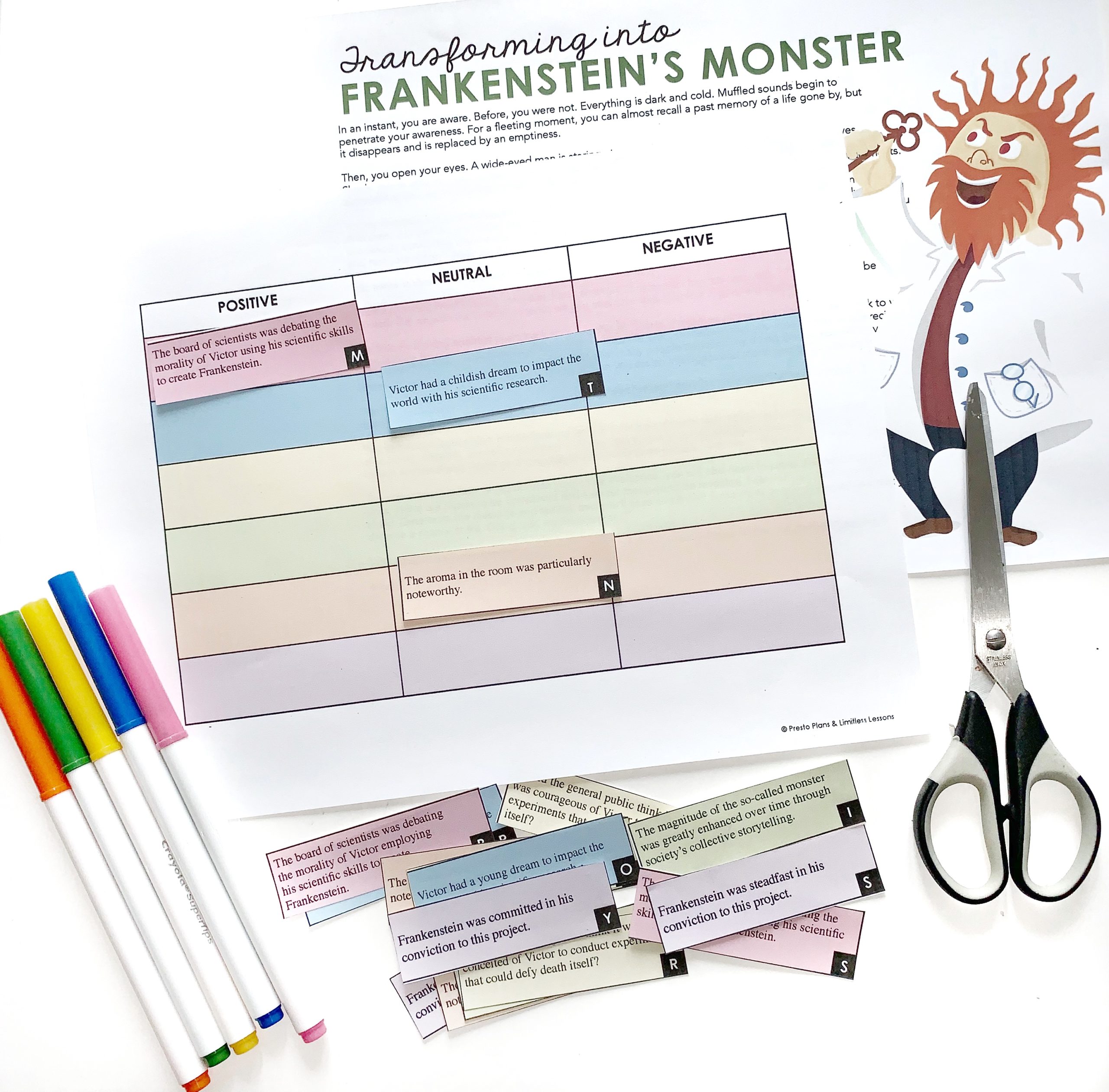
share this post